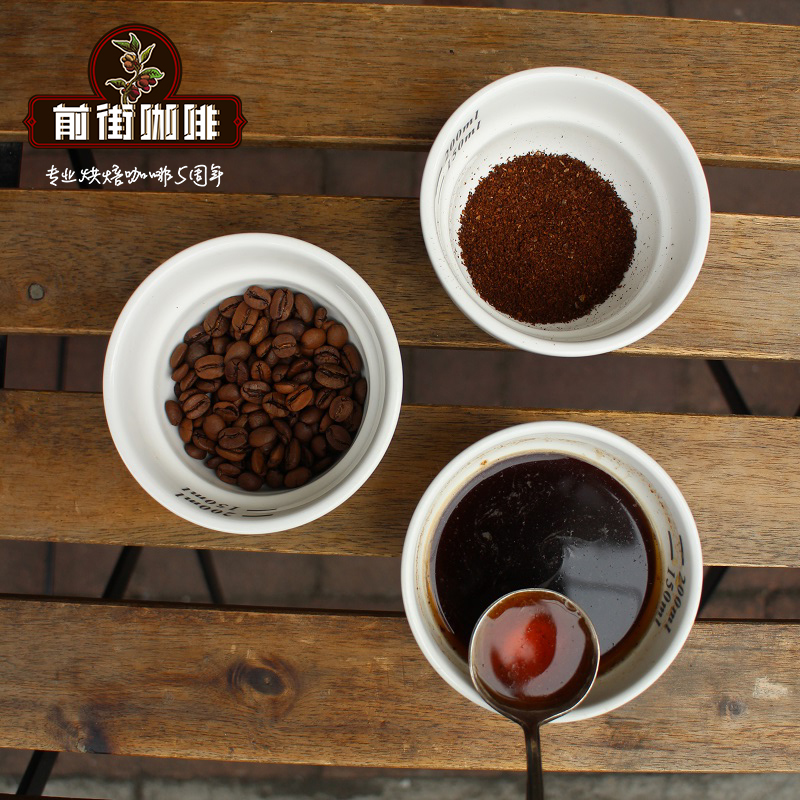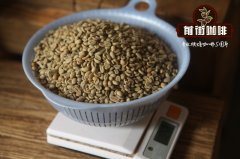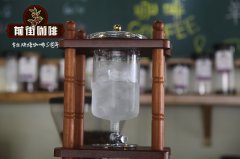Growing environment and history of AA coffee beans, a small farmer in Mbeya town, Shiviwaka producing area, Tanzania? Front street

Professional coffee knowledge exchange more coffee bean information please follow the coffee workshop (Wechat official account cafe_style)
Growing environment and history of AA coffee beans, a small farmer in Mbeya town, Shiviwaka producing area, Tanzania? How to brew Tanzanian coffee in Qianjie?
Shiviwaka is the Swahili language of the Tanzania Coffee Farmers' Association registered as a farmer's own non-governmental organization in 2009. It represents the interests of 8500 farmers organized by six different groups in the Mbeya,Mbozi,Busokelo,Ileje and Rugwe areas. Small farmers in Shiviwaka own an average of 1.5 acres of coffee, especially in Mbeya, where the average annual rainfall is about. 1500 mm. The association is building a strong partnership with Sucafina to ensure the sustainability of the farm. Coffee production in Tanzania is concentrated in five major geographical areas of Tanzania. In the north (Kilimanjaro, Arusha and Tarim), in the west (Kighoma and Kagera) and in the south (Mbeya, Sonway, Iringa, Njoum and Ruvuma).
In the past few years, Mbeya's coffee has really become very noteworthy. Tanzania is famous for its Peaberry coffee, but this AA from Shiviwaka Co-op in Tanzania is one of our best African coffees this year. The new season and new baking profile, which we think is our exotic espresso, has been used as a filter since the beginning of last year. The unique aroma from its character is interestingly orange, with some dry spices ending in a smooth cocoa flavor.
Shiviwaka is the Swahili language of the Tanzania Coffee Farmers' Association registered as a farmer's own non-governmental organization in 2009. It represents the interest of 8500 farmers organized by six different groups in the Mbeya,Mbozi,Busokelo,Ileje and Rugwe areas.
Small farmers in Shiviwaka own an average of 1.5 acres of land under coffee, especially in Mbeya, with an average annual rainfall of about 1500 mm.
Region: Mbeya
Altitude: 1560 m.
Variety: Kent, bourbon
Cooperatives / groups: Usongwe AMCOS
Variety:
Farmers in Usongwe mainly grow Arabica varieties grown by their ancestors. Kent and Bourbon are the most common, and are getting closer with the introduction of Compact.
Kent is considered to be a natural mutation of Typica originally found in India and is known to be more Hemileia vastatrix aka Coffee Leaf Rust than Typica itself. Typica is the backbone of most specialty coffee in the world. The first plantations planted in the United States and Asia belong to the Typica variety. The cup character of Typica is usually well balanced and may be a little complicated. It is highly transparent and can maintain enough sweetness to interest you in even if your coffee gets cold. Even if I didn't get a chance to taste Kent isolation, I suspect it has cup features similar to those of the classic Typica.
Processing: thoroughly wash and dry the bed in Africa
The origin of the name is based on the surrounding area and the nearby Usongwe Valley.
Farmers in Usongwe have mature, well-maintained trees, with an average age of about 20-35. Usually they lose productivity earlier, but the trees remain productive because of regular pruning and other agricultural practices. The genetic pedigree of coffee varieties should also be recognized.
Coffee was found on Bourbon (an island east of Madagascar, now known as Reunion) and brought to the island by the French from Yemen. Bourbon is vulnerable to all major diseases and pests, making it more difficult for farmers to become profitable crops in some countries and / or regions. The cup is of very good quality, with high acidity and clean, sweet taste, which will remain in this state when cooled.
The United Republic of Tanzania Coffee Research Institute (TACRI) has been very active in developing and distributing varieties resistant to coffee pulp disease (CBD) and coffee leaf rust that have existed in the past, and farmers are increasingly using these varieties because of their resistance. Compact is one of these new varieties, which is widely used in rural areas because of its high resistance to coffee pulp disease.
Usongwe producers handle their coffee at home. On average, most families' cafes are only a 15-to 30-minute walk from their small factories. During harvest, the coffee fruit is brought to a small pulper and pulped by hand within 7 hours after picking. The cherries are sorted, made into fermentors, and then fermented in clean water for about three days. On the fourth day, remove the coffee from the jar and wash off all traces of mucus (the residue of sticky fruit around the seeds), then soak it again in clean water for another 24 hours. Soaking is said to help increase sweetness, which is a common practice, especially in Kenya.
Flavor: honey, grapes and vanilla have a creamy palate and delicate grape acidity. It seems to be very general, but there is no obvious and more complex acidity. Texture and sweetness seem to dominate, and it's so wonderful.
Qianjie coffee is recommended for brewing:
Filter cup: Hario V60
Water temperature: 90 degrees
Degree of grinding: small Fuji degree of grinding 4
Cooking methods: the ratio of water to powder is 1:15, 15g powder, the first injection of 25g water, 25 s steaming, the second injection to 120g water cut off, waiting for the powder bed water to half and then water injection, slow water injection until 225g water, extraction time about 2:00
Analysis: using three-stage brewing to clarify the flavor of the front, middle and back of the coffee. Because V60 has many ribs and the drainage speed is fast, it can prolong the extraction time when the water is cut off.
Important Notice :
前街咖啡 FrontStreet Coffee has moved to new addredd:
FrontStreet Coffee Address: 315,Donghua East Road,GuangZhou
Tel:020 38364473
- Prev

Tanzania Coffee-are the coffee beans in the Shiviwaka producing area of Shvivaka bitter? What's the wind?
Professional coffee knowledge exchange more coffee bean information please follow the coffee workshop (Wechat official account cafe_style) Tanzania Coffee-Shvivaka Shiviwaka production area coffee beans are bitter? What flavor and taste do you have? How to cook it? Tanzania is famous for its peaberry coffee, but Tanzania Shiviwaka Co-Op 's AA is our best this year.
- Next

FAQ certification-the flavor characteristics and treatment of AA coffee beans in Dogilimanjaro, Tanzania? Tan
Professional coffee knowledge exchange more coffee bean information please follow the coffee workshop (Wechat official account cafe_style) FAQ certification-Tanzania multi-door Kilimanjaro AA coffee beans flavor characteristics and treatment? How to process raw beans in Tanzania? Kilimanjaro coffee is grown on the volcanic slope, the highest peak in northeastern Tanzania, the African continent, showing a distinct flavor.
Related
- Detailed explanation of Jadeite planting Land in Panamanian Jadeite Manor introduction to the grading system of Jadeite competitive bidding, Red bid, Green bid and Rose Summer
- Story of Coffee planting in Brenka region of Costa Rica Stonehenge Manor anaerobic heavy honey treatment of flavor mouth
- What's on the barrel of Blue Mountain Coffee beans?
- Can American coffee also pull flowers? How to use hot American style to pull out a good-looking pattern?
- Can you make a cold extract with coffee beans? What is the right proportion for cold-extracted coffee formula?
- Indonesian PWN Gold Mandrine Coffee Origin Features Flavor How to Chong? Mandolin coffee is American.
- A brief introduction to the flavor characteristics of Brazilian yellow bourbon coffee beans
- What is the effect of different water quality on the flavor of cold-extracted coffee? What kind of water is best for brewing coffee?
- Why do you think of Rose Summer whenever you mention Panamanian coffee?
- Introduction to the characteristics of authentic blue mountain coffee bean producing areas? What is the CIB Coffee Authority in Jamaica?

